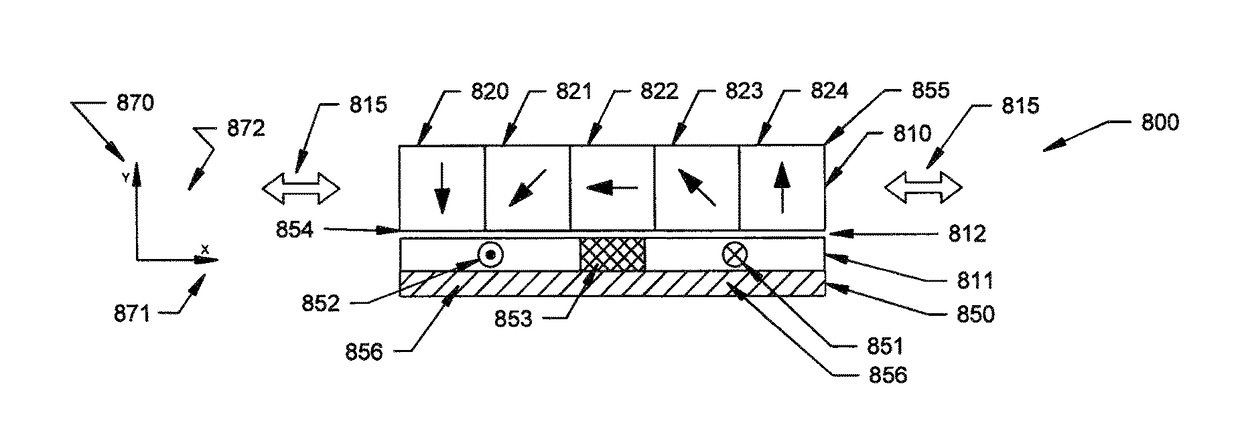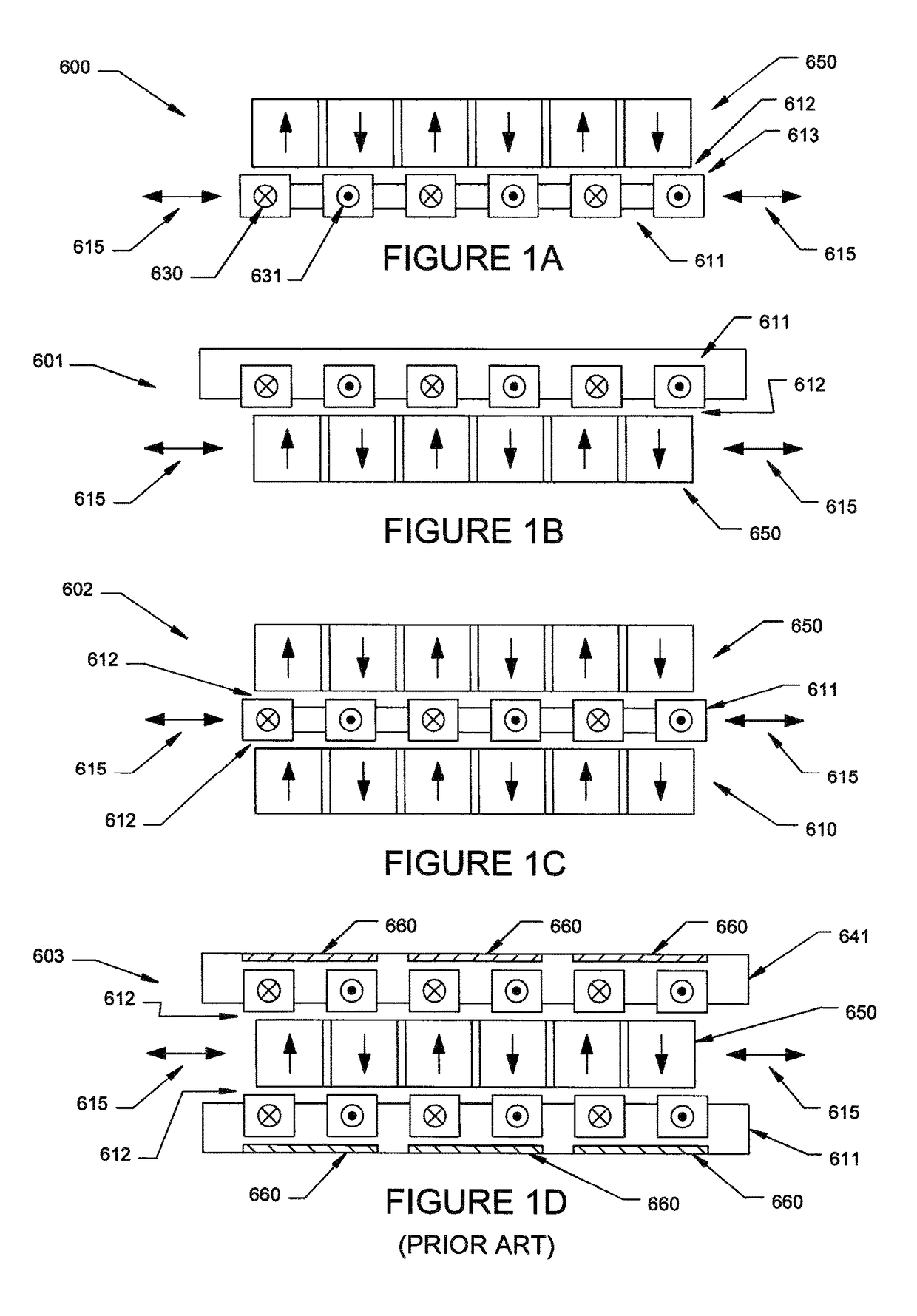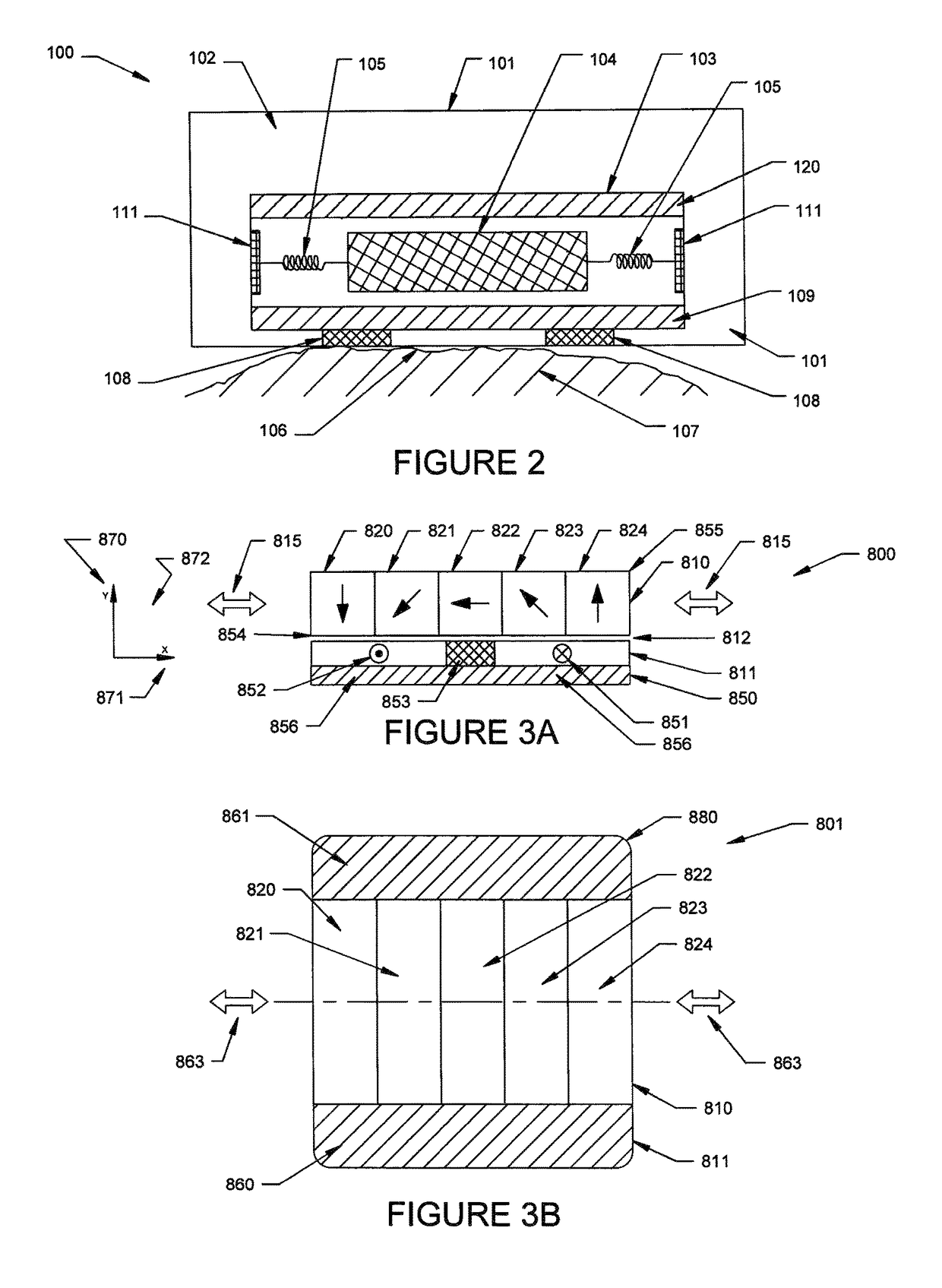Apparatus for generating a vibrational stimulus using a planar reciprocating actuator
a reciprocating actuator and actuator technology, applied in the field of vibrators and transducers, can solve the problems of low q resonant devices, prone to the effects of loading, and complex motion of the motor housing, and achieve the effects of small displacement, increased force, and small displacemen
- Summary
- Abstract
- Description
- Claims
- Application Information
AI Technical Summary
Benefits of technology
Problems solved by technology
Method used
Image
Examples
Embodiment Construction
[0038]Referring to FIGS. 1A through 12, wherein like reference numerals refer to like components in the various views, there is illustrated therein a new and improved apparatus for generating a vibrational stimulus using a planar reciprocating actuator (PRA).
[0039]The PRA is based on the design of an electromagnetic linear motor. A linear motor can be thought of as a rotary motor with the rotor and stator unwrapped; so a typical configuration may be a series of permanent magnets mounted in a linear fashion adjacent to multiple coils, also arranged in a linear fashion. Either the coils or magnets are mounted on a moving element so that they are free to move when the coils are energized—giving rise to a moving coil configuration (i.e. where the coils move) or a moving magnet configuration (i.e. where the magnet moves).
[0040]The design objective for most linear motors is to achieve significant displacement with sufficient force to move a load, while maintaining linearity and positionin...
PUM
 Login to View More
Login to View More Abstract
Description
Claims
Application Information
 Login to View More
Login to View More - R&D
- Intellectual Property
- Life Sciences
- Materials
- Tech Scout
- Unparalleled Data Quality
- Higher Quality Content
- 60% Fewer Hallucinations
Browse by: Latest US Patents, China's latest patents, Technical Efficacy Thesaurus, Application Domain, Technology Topic, Popular Technical Reports.
© 2025 PatSnap. All rights reserved.Legal|Privacy policy|Modern Slavery Act Transparency Statement|Sitemap|About US| Contact US: help@patsnap.com



